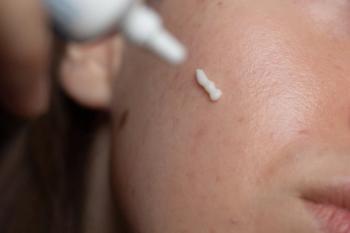
Journal Digest: June 11, 2025
Key Takeaways
- VYC-12 injectable improved skin conditions in Japanese patients, showing reduced redness and enhanced hydration without adverse events.
- Chronic spontaneous urticaria in Europe is under-treated, with significant mental and physical health impacts, especially in the UK.
This review of the latest dermatologic studies includes insights into skin improvement with injectable hyaluronic acid, burden of chronic spontaneous urticaria, and more.
Journal of Cosmetic Dermatology: Skin Improvement in Japanese Patients With Inflammatory Dermatologic Conditions Using the Injectable Hyaluronic Acid VYC-12
A retrospective study evaluated the use of VYC-12, a high–molecular weight hyaluronic acid injectable, in 15 adults with facial inflammatory skin conditions or aging-related concerns in Japan. Among 10 patients with treatment-resistant atopic dermatitis, acne vulgaris, or rosacea, VYC-12 significantly reduced skin redness and improved hydration over a 4-month period. All participants reported satisfaction with outcomes, and no adverse events occurred.1
Journal of the European Academy of Dermatology and Venereology: Prevalence, treatment and burden of chronic spontaneous urticaria in five European countries
A population-based study assessed the burden and treatment patterns of chronic spontaneous urticaria (CSU) across 5 European countries (France, Germany, Italy, Spain, and the UK). Mental and physical health scores were significantly lower in the CSU cohort than in the general population, with high rates of anxiety, depression, and health care resource use, particularly in the UK. Despite this burden, fewer than half of patients received prescription or over-the-counter treatment.2
Journal of Paediatrics and Child Health: Mycoplasma-Induced Rash and Mucositis: Ocular Manifestations, Treatment and Outcomes in a Paediatric Population
A retrospective case series examined the ocular features and outcomes of mycoplasma-induced rash and mucositis in 14 pediatric patients. All patients exhibited conjunctival injection or ulceration, but no corneal involvement was reported. Most cases were managed conservatively with preservative-free antibiotics, lubricants, and selective use of topical corticosteroids under ophthalmologic guidance. Overall, 80% of patients recovered fully without long-term ocular complications.3
Journal der Deutschen Dermatologischen Gesellschaft: Evaluation of routine care of prurigo nodularis in Germany: retrospective chart review study (ADVANCE PN)
A retrospective chart review (ADVANCE PN) analyzed medical records from 363 adults newly diagnosed with prurigo nodularis across 42 dermatologic centers in Germany between 2012 and 2022, revealing significant care gaps in routine practice. While nodules and papules were frequently reported, only a small fraction underwent patient-reported outcome assessments (8.8%) or disease-specific scoring (3.3%). Topical corticosteroids were the predominant first-line treatment, and in many cases, no second-line therapy was pursued.4
Skin Research and Technology: Polynucleotides Enhance Skin Barrier Function and Reduce Inflammation in a 2,4-Dinitrochlorobenzene-Induced Mouse Model of Atopic Dermatitis
In a preclinical study using a DNCB-induced mouse model of atopic dermatitis, researchers found that topical polynucleotides (PNs) significantly improved clinical and immunological outcomes. PNs reduced dermatitis severity scores, spleen index, serum IgE levels, and transepidermal water loss, while histological analysis revealed decreased epidermal thickness, mast cell infiltration, and dermal inflammation. Additionally, PNs downregulated key inflammatory cytokines and preserved filaggrin expression in the skin. The combination of PNs with hyaluronic acid further enhanced therapeutic effects.5
References
- Watanabe C. Skin improvement in Japanese patients with inflammatory dermatologic conditions using the injectable hyaluronic acid VYC-12. J Cosmet Dermatol. Published online June 4, 2025.
doi:10.1111/jocd.70275 - Balp MM, Krupsky K, Gupta S, et al. Prevalence, treatment and burden of chronic spontaneous urticaria in five European countries. J Eur Acad Dermatol Venereol. Published online June 5, 2025.
doi:10.1111/jdv.20772 - Cool D, Nguyen V, Zhang S, Seo S, Dai S. Mycoplasma-induced rash and mucositis: Ocular manifestations, treatment and outcomes in a paediatric population. J Paediatr Child Health. Published online June 5, 2025.
doi:10.1111/jpc.70103 - von Kiedrowski R, Metz M, Weisshaar E, Albrecht I, Schild M, Ständer S. Evaluation of routine care of prurigo nodularis in Germany: retrospective chart review study (ADVANCE PN). JDDG: J Der Deutschen Dermatol Ges. Published online June 8, 2025.
doi:10.1111/ddg.15721 - Ha YJ, Tak KH, Lee JL, et al. Polynucleotides enhance skin barrier function and reduce inflammation in a 2,4-dinitrochlorobenzene-induced mouse model of atopic dermatitis. Skin Res Technol. Published online June 8, 2025.
doi:10.1111/srt.70189
What new studies have you been involved with or authored? Share with us by emailing
Newsletter
Like what you’re reading? Subscribe to Dermatology Times for weekly updates on therapies, innovations, and real-world practice tips.


















